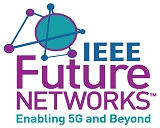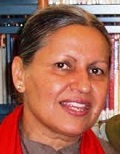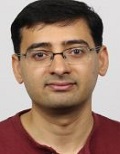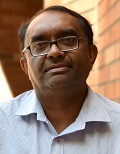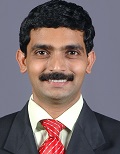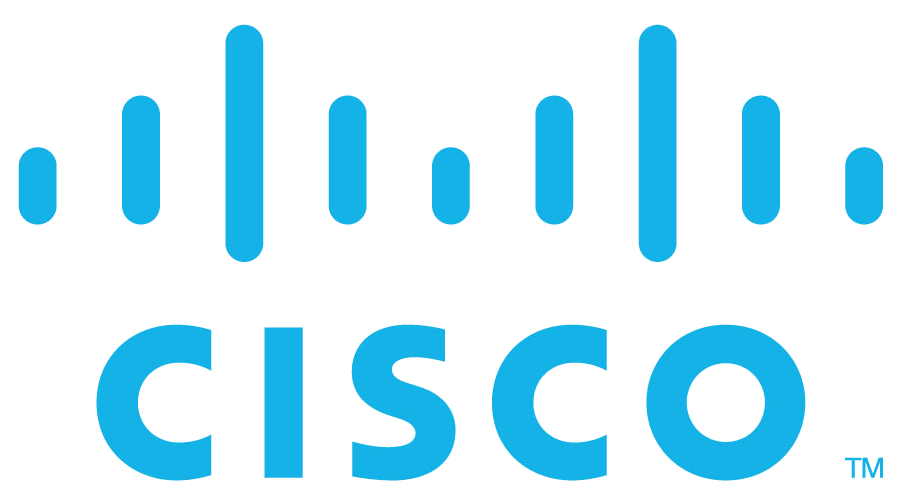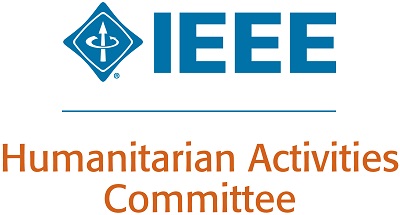Invited Speakers
Hrishikesh B. Acharya
Rochester Institute of Technology, USAVisit Homepage
The performance and reliability we demand from switched networks, such as data center networks, backbone WAN, or even customer LAN, has grown by orders of magnitude. Such demands have been supported through advances in robust and high-performance switch hardware, transmission and media technologies. However, no matter how robust, network components still eventually fail. At the time of failure, network resilience and fast recovery depend on having built-in redundancy in the network, and fast, fault- tolerant Layer 2 protocols. A closer look reveals that there is a strong unmet need for such protocols. The existing protocols such as RSTP are simply not fast enough for Data Centers etc. (In response to this challenge, such networks give up L2 solutions, and build highly-resilient infrastructure with fault recovery etc. as L3 SDN solutions, or introduce L3 technology into L2, as with TRILL.) In this paper, we introduce a fast and robust loop-avoidance protocol for pure L2 networks, named the Meshed Tree Protocol (MTP); it provides resilience and fast recovery for switched networks.
Claudio Casetti
Politecnico di Torino, ItalyVisit Homepage
Congestion in urban areas carries inherent costs in terms of fuel consumption, pollution, delays. Although ITS systems have devised solutions such as GLOSA, they require sophisticated infrastructure and thus installation and maintenance investments. In this paper, we propose V^3TL, a V2V-based distributed solution to manage unregulated intersections that aims primarily at minimizing the time needed to clear the intersection, while reducing the number of stop-and-go maneuvers that are known to increase emissions. The proposed solution operates a cyclic scheduling of vehicles as they approach the intersection, letting them coordinate among each other through V2V communication. We simulated the solution in an unregulated four-way intersection, showing that it achieves its objectives.
Sanjay Jha
University of NSW, AustraliaVisit Homepage
Remote key-less entry systems (KES) are one of the most important and desirable features of modern vehicles. However, due to platform dependencies and/or design flaws, majority of the KES used even in recent high end cars are vulnerable to signal relay attacks. In this work, we propose Proxicar - an architecture for secure Digital Key Solution that enables user to use an authorised digital key stored in his/her personal device for remote vehicle access. We study the feasibility of employing physical layer features i.e., Received Signal Strength Indicator (RSSI) of Low Power Bluetooth (BLE) technology for (i) proximity estimation, (ii) user activity detection, and (iii) second factor authentication between the vehicle and user device. We highlight the major challenges involved in using BLE channel features for security, and present a method to overcome those issues. We implement our proposed method on off-the-shelf android-based devices and experimentally evaluate the performance. Our promising results show that BLE physical layer features can be effectively employed to design secure KES.
Salil Kanhere
University of NSW, AustraliaVisit Homepage
Cyberphysical Systems (CPS) are transforming the way we interact with the physical world around us. However, centralised approaches for CPS systems are not capable of addressing the unique challenges of CPS due to the complexity, constraints, and dynamic nature of the interactions. To realize the true potential of CPS, a decentralized approach that takes into account these unique features is required. Recently, blockchain-based solutions have been proposed to address CPS challenges. Yet, applying blockchain for diverse CPS domains is not straightforward and has its own challenges. In this paper, we share our experiences in applying blockchain technology for CPS with an aim to provide insights and highlight the challenges and future opportunities.
Bio: Salil Kanhere is a Professor in the School of Computer Science and Engineering at UNSW Sydney, Australia. He also has research affiliations with CSIRO’s Data61 and the Cyber Security Cooperative Research Centre. He has held visiting appointments at Technical University Darmstadt, University of Zurich, Graz University of Technology and Institute of Infocom Research Singapore. His research interests include Internet of Things, blockchain, cyber physical systems, applied machine learning and cybersecurity. His research has been featured in various media outlets including ABC News Australia, Forbes, IEEE Spectrum, Wired, ZDNET, Computer World, Medium and MIT Technology Review. He serves as the Editor in Chief of the Ad Hoc Networks Journal and as Associate Editor of Pervasive and Mobile Computing and Computer Communications journals. He is an ACM Distinguished Speaker and a Humboldt Research Fellow. He regularly serves on the organising committee of top-tier IEEE/ACM conferences in his discipline.
Veena Mendiratta
Bell Labs, Nokia, USAVisit Homepage
Telecommunication networks are designed for high reliability; however, when they do fail, it is difficult to detect problems in a timely manner as the networks are characteristically complex and the problems may be subtle rather than catastrophic. Within the overall objective of network anomaly detection, the focus of this paper is on: dimensionality reduction through feature selection to determine the minimum set of features that provide the most information regarding the network state; and the application of the multivariate unsupervised learning technique, Principal Component Analysis (PCA), to detect anomalies with low detection latency. For anomaly detection, we apply PCA on the normal data, and find the subspace where the variation of the normal data is small. By characterizing the variation of the normal data in the subspace, we derive a boundary of the normal data, and develop an anomaly detection model based on it. The algorithms are developed and tested with Per Call Measurement Data records from a 4G-LTE network. The impact of our work is the proactive detection of network anomalies in mobile networks, thereby improving network reliability and availability.
Supratik Mukhopadhyay
Louisiana State University, USAVisit Homepage
Recently, it has been widely accepted by the research community that interactions between humans and cyber-physical infrastructures have played a significant role in determining the performance of the latter. The existing paradigm for designing cyber-physical systems for optimal performance focuses on developing models based on historical data. The impacts of context factors driving human system interaction are challenging and are difficult to capture and replicate in existing design models. As a result, many existing models do not or only partially address those context factors of a new design owing to the lack of capabilities to capture the context factors. This limitation in many existing models often causes performance gaps between predicted and measured results. We envision a new design environment, a cyber-physical human system (CPHS) where decision-making processes for physical infrastructures under design are intelligently connected to distributed resources over cyberinfrastructure such as experiments on design features and empirical evidence from operations of existing instances. The framework combines existing design models with context-aware design-specific data involving human-infrastructure interactions in new designs, using a machine learning approach to create augmented design models with improved predictive powers.
Vishnu Navda
Microsoft Research, IndiaVisit Homepage
At Microsoft, we are developing new Search & AI technologies for various vertical markets, education being one of them. We look to reimagine input modalities through speech and camera to make search easily accessible on mobile devices without the need to input a query in a search box. Image as an input is particularly challenging, and we develop new ways to understand user intent and provide appropriate knowledge and actions geared towards learning and understanding concepts. Through these innovations, we have an education focused product that is easily accessible to students on their mobile devices.
Nirmalya Roy
University of Maryland Baltimore County, USAVisit Homepage
Recognizing human activity and behavior is a well-known research problem. State-of-the-art machine learning approaches, a variety of smart home sensor systems, and Internet-of-Things (IoT) devices are in place to help aid activity discovery, recognition, and inference processes. However, the current approaches work with single user, a predefined set of devices and in a specific smart home environment. Scaling, adapting, and crossing the boundaries beyond those presumed settings in presence of limited or unlabeled datasets is a challenging research avenue to investigate. In this talk, I will first articulate the underpinning challenges across heterogenous IoT devices, different users, and environments. I will discuss our preliminary work on addressing those challenges using deep learning-based domain adaptation and transfer learning-based techniques, and present experimental results using real datasets collected from different IoT devices such as smartphones, smartwatches, and diverse users. I will also briefly touch upon the data analytics techniques we have been employing in some other research projects related to smart environments such as functional and cognitive health assessment of older adults, mobile gunshot detection, automated dance assessment, virtual energy audits, flash flood detection, and sports analytics.
Dr. Nirmalya Roy is currently an Associate Professor in the Information Systems department and the director of the Mobile, Pervasive and Sensor Computing (MPSC) Lab at the University of Maryland, Baltimore County (UMBC). He has been awarded NSF CAREER 2018, Alzheimer’s Association, NSF CPS (Cyber-Physical Systems), NSF GCTC (Global City Team Challenge), Office of Naval Research, Constellation E2: Energy to Educate, and UMB-UMBC Research and Innovation Partnership grants, totaling ~$2.5 million. His current research interests include applied machine learning and data analytics techniques with applications to smart health, cyber-physical systems, and smart city. He is a recipient of Mark Weiser Best paper award in IEEE PerCom 2006 conference, Best paper award in QShine 2009 conference, Best paper award nomination in IEEE PerCom 2011 and IEEE SmartComp 2018 conference, and Institute for Infocomm 2011 Best Research paper award. He is currently leading the NSF CAREER project on Scalable and Adaptable Cross-Domain Autonomous Health Assessment, Alzheimer's Association’s project on Functional and Cognitive Health Assessment of Older Adults with Dementia, NSF Cyber-Physical Systems project on Virtual Energy Auditing, and NSF Global City Team Challenge project on Flash Floods Detection in Smart City at UMBC. Prior to joining UMBC, he was a Clinical Assistant Professor in the School of Electrical Engineering and Computer Science department at the Washington State University. He worked as a Research Staff Member in the Institute for Infocomm Research (I2R) in Singapore from 2010 to 2011 and as a postdoctoral fellow in the Electrical and Computer Engineering department at the University of Texas at Austin from 2008 to 2009. He received his M.S. and Ph.D. degrees in Computer Science and Engineering from the University of Texas at Arlington in 2004 and 2008, respectively. He received his B.E. degree in Computer Science and Engineering in 2001 from Jadavpur University, India. More information about him, his students and research can be found at his lab homepage https://mpsc.umbc.edu/.
Sumit Roy
University of Washington, USAVisit Homepage
This talk will first present a brief overview of some key new features of the about-to-be-finalized (late 2019) latest WiFi (802.11ax or WiFi6) standard, that aims to improve operational efficiency in dense deployment scenarios. Thereafter, some preliminary work in evaluating new spatial reuse options in 802.11ax will be described, along with performance evaluation conducted via the open source network simulator ns-3 (www.nsnam.org). Finally, ongoing work on additional features (OFDMA and Uplink Orthogonal Multiple Access) will be mentioned along with new research needed to enable spectrum sharing with 5G NR Unlicensed (5G NR-U) in the 6 GHz band.
Bio: Sumit Roy received the B. Tech. degree from the Indian Institute of Technology (Kanpur) in 1983, and the M. S. and Ph. D. degrees from the University of California (Santa Barbara), all in Electrical Engineering in 1985 and 1988 respectively, as well as an M. A. in Statistics and Applied Probability in 1988. Presently he is Integrated Systems Professor of Electrical Engineering, Univ. of Washington where his research interests include fundamental analysis/design of wireless communication and sensor network systems spanning a diversity of technologies and system application areas: next-gen wireless LANs and 5G cellular networks, heterogeneous network coexistence, spectrum sharing, white space networking and software defined radio platforms, autonomous vehicular and sensor networking. He spent 2001-03 on academic leave at Intel Wireless Technology Lab as a Senior Researcher engaged in systems architecture and standards development for ultra-wideband systems (Wireless PANs) and next generation high-speed wireless LANs. He has served as IEEE Comm. Society Distinguished Lecturer and was elevated to IEEE Fellow in 2007 for "contributions to multi-user communications theory and cross-layer design of wireless networking standards".
Simone Silvestri
University of Kentucky, USAVisit Homepage
Smart environments, such as smart cities and smart homes, are Cyber-Physical-Systems (CPSs) which are becoming an increasing part of our everyday lives. Several applications in these systems, such as energy management through home appliance identification or activity recognition, adopt Machine Learning (ML) as a practical tool for extracting useful knowledge from raw data. These applications are usually characterized by a sequential stream of data, unlike the classical ML scenario in which the entire data is available during training. For such applications, Stream-based Active Learning (SAL) has been designed as a type of supervised ML in which an expert is asked to label the most informative instances as they arrive. Previous SAL techniques assume that the expert is always available and always labels the data correctly. However, in several applications, such as those mentioned above, the SAL activity interweaves with the everyday life of regular residents, who are often not experts, and may also not always be willing to participate in the labeling process. In this paper, we discuss the importance of user-centered ML, and show how taking into account realistic models of user behavior significantly improves the accuracy and reduces the training period of smart environment applications based on SAL. We consider two use cases, namely appliance identification and activity recognition. Results based on real data sets show an improvement in terms of accuracy up to 55.38%.
Krishna Sivalingam
IIT Madras, IndiaVisit Homepage
This paper deals with techniques to reduce the reliance of IP address-lookup schemes in packet-switched routers on Ternary Content Associative Memory (TCAM), as is commonly implemented in current-generation IP routers. The proposed approaches involve cooperation among neighboring routers, where some form of route lookup clue is provided a router to its downstream router. This is used to reduce the address lookup time, which is particularly important is routers handling links of 100-400 Gbps. Four schemes are compared, of which three are proposed in this paper and are called Lookup at Egress (LE), Unique Memory Index (UM) and flow index (FI) schemes. They respectively provide egress port, global and local memory indices as lookup clues to their next-hop routers. A P4 switch-based implementation has been used to establish the feasibility of the proposed schemes. Further, a detailed performance study shows that up to 80% of the TCAM lookups can be eliminated by these schemes.
Bio: Krishna M. Sivalingam is an Institute Chair Professor in the Department of CSE, IIT Madras, Chennai, INDIA, where he was also Head of the Department from 2016 till 2019. Previously, he was a Professor in the Dept. of CSEE at University of Maryland, Baltimore County, Maryland, USA from 2002 until 2007; with the School of EECS at Washington State University, Pullman, USA from 1997 until 2002; and with the University of North Carolina Greensboro, USA from 1994 until 1997. He has also conducted research at Lucent Technologies' Bell Labs in Murray Hill, NJ, and at AT&T Labs in Whippany, NJ. He received his Ph.D. and M.S. degrees in Computer Science from State University of New York at Buffalo in 1994 and 1990 respectively; and his B.E. degree in Computer Science and Engineering in 1988 from Anna University's College of Engineering Guindy, Chennai (Madras), India. While at SUNY Buffalo, he was a Presidential Fellow from 1988 to 1991.
His research interests include wireless networks, optical wavelength division multiplexed networks, and performance evaluation. His work has been supported by several sources including AFOSR, DST India, DOT India, IBM, NSF, Cisco, Intel, Tata Power Company and Laboratory for Telecommunication Sciences. He holds three patents in wireless networks and has published several research articles including more than seventy journal publications. He has co-edited a book on Next Generation Internet Technologies in 2010; on Wireless Sensor Networks in 2004; on optical WDM networks in 2000 and 2004. He is serving or has served as a member of the Editorial Board for journals including IEEE Networking Letters, ACM Wireless Networks Journal, IEEE Transactions on Mobile Computing, and Elsevier Optical Switching and Networking Journal. He has served as Editor-in-Chief of Springer Photonic Network Communications Journal and EAI Endorsed Transactions on Future Internet.
He is a Fellow of IEEE, a Fellow of INAE and an ACM Distinguished Scientist.



